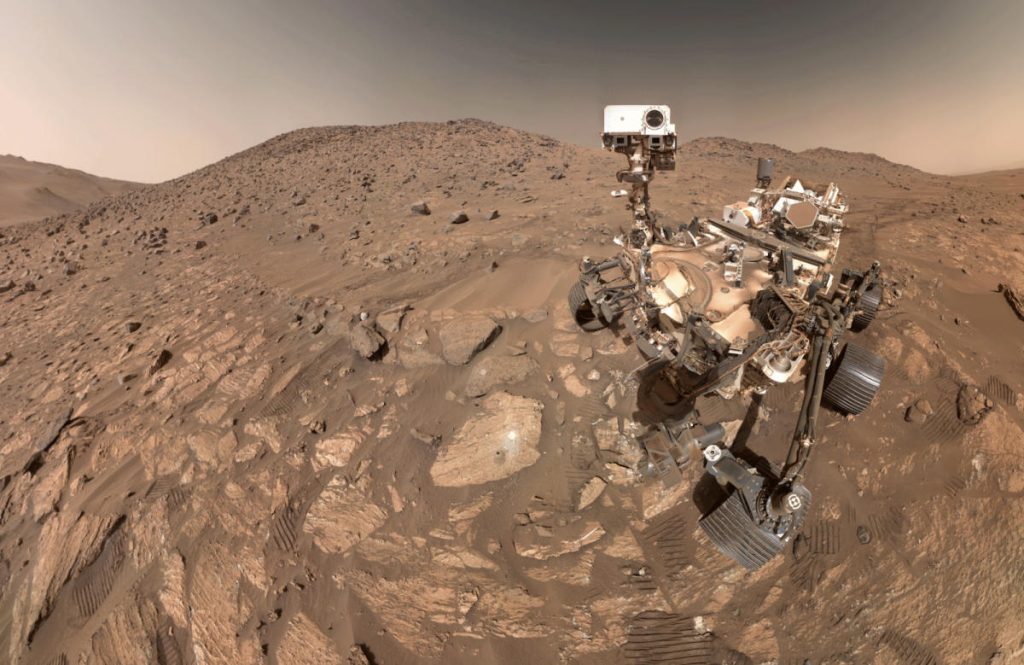NASA’s Perseverance rover has been collecting samples from Mars since 2021, and one of its most recent rocks could help it reach its goal of finding evidence of ancient life on Mars. Named Cheyaba Falls after the tallest waterfall in the Grand Canyon, the 3.2-foot by 2-foot sample contains “chemical signatures and structures” that could be indicative of ancient life on Mars. Formed by ancient microorganisms From billions of years ago.
On July 21, Perseverance retrieved a rock from what was once a Martian river valley carved out by flowing water long ago. The sample, which can be seen close-up in the photo below and from a distance in the center above, has a large white vein of calcium sulfate running its length, indicating that water once flowed through the rock.
More importantly, there are millimeter-sized “leopard-spot”-like specks throughout the central reddish band. On Earth, these spots could form on sedimentary terrestrial rocks when chemical reactions occur that turn hematite, one of the minerals responsible for Mars’ reddish color, white. These reactions could release iron and phosphate, which could provide energy for microbes.
The spacecraft’s Planetary X-ray Lithochemistry instrument (PIXL) has already determined that the dark ring around the spot contains iron and phosphate, but that doesn’t automatically mean the rocks served as host to ancient microbes.
These spots could have formed through nonbiological processes, something scientists need to figure out. “At this point we can’t say we’ve found life on Mars,” says deputy project scientist Katie Stack Morgan. Said“But what we’re saying is that we have a potential biosignature, a set of features that may have a biological origin, but that require further study and more data.”
NASA must bring the samples collected by Perseverance, including the Cheyaba Falls, back to Earth. The New York Times Note, Mars Sample Return Mission The mission has been delayed for years and won’t be able to bring back rocks from the Red Planet until 2040, instead of the early 2030s as originally planned. NASA recently We asked aerospace companies The team is exploring alternatives to bring the samples back to Earth sooner and plans to fund a study planned for later this year. Scientists will also need to conduct extensive testing to rule out contamination, non-biological processes, and other possible explanations for the formation of the leopard spots before they can declare them as evidence of ancient Martian life.


